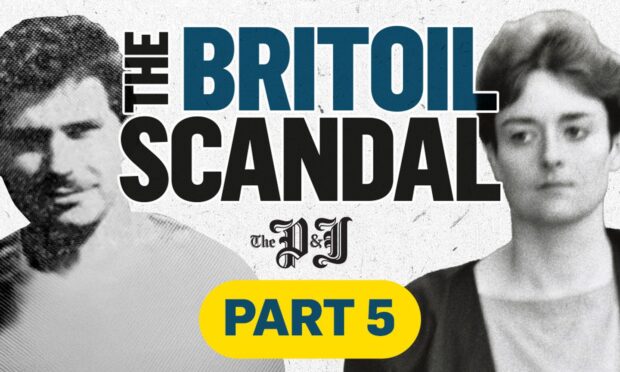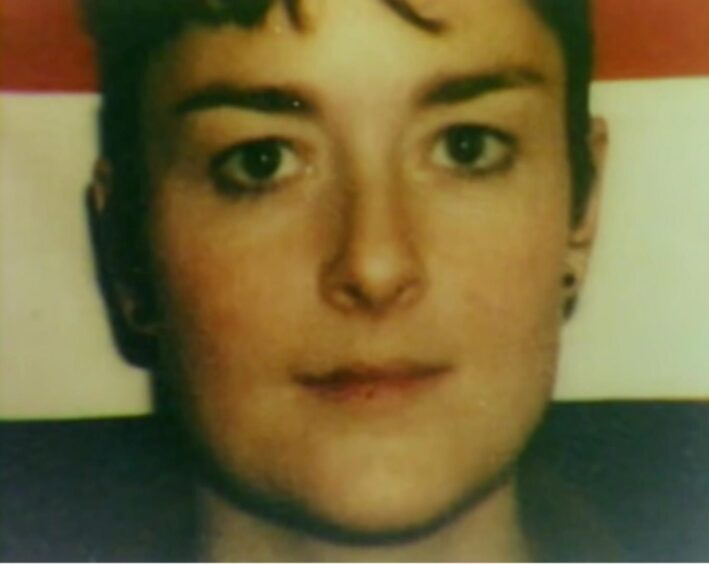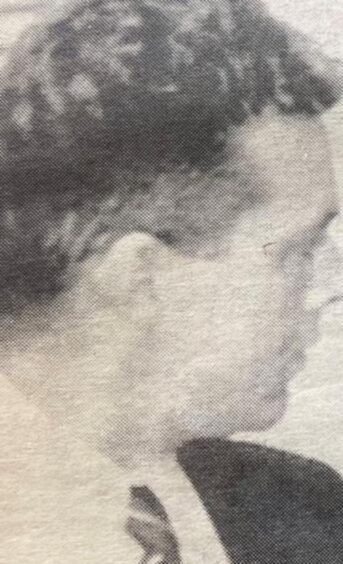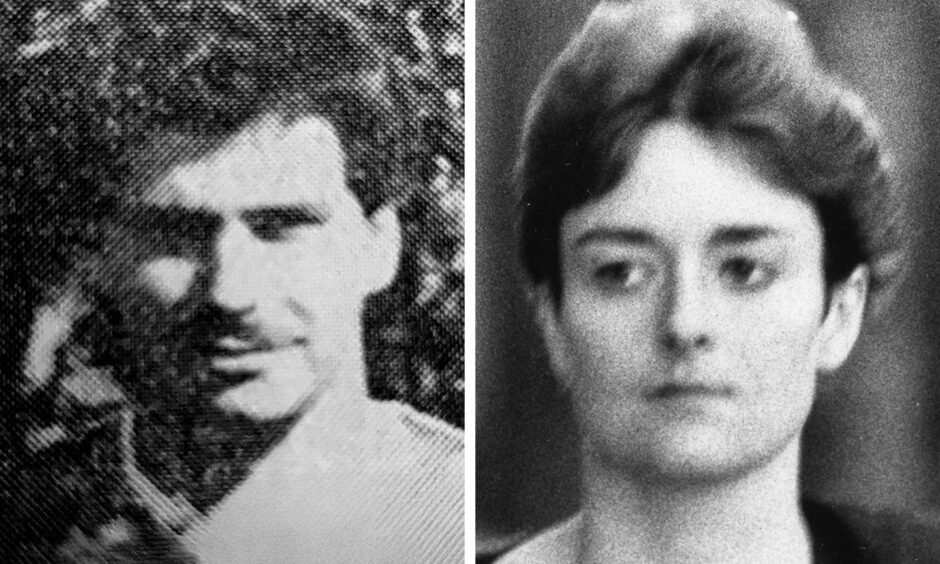Alison Anders and Roy Allen were behind bars, serving time for attempting to defraud Aberdeen oil firm Britoil out of £23m – but the case was not yet over.
Because, during the trial, it emerged that Anders had alleged a 38-year-old Albanian man with friends in high places had arranged for a Swiss bank account to be opened as part of the scam.
She also claimed that this man, Hajdin Sejdija, had ordered someone to take her out into the desert and threaten her.
It was an audacious claim.
So audacious, in fact, that many of those involved in the trial thought it could not possibly be true.
It couldn’t be true … could it?
“I suspect my view at the time was that this is just a lot of lies,” said Crown prosecutor Lord Uist, who was then known as Roderick Macdonald KC.
There was only one problem – Anders’ story had merit.
Sure, it was an outrageous tale – but there was a real likelihood it was credible.
It was about to send Grampian Police down a rabbit hole with a plot line straight out of a Hollywood thriller.
Anders’ sensational yarn would lead to Aberdeen detectives into the realm of Albanian moneymen who had links to the Abu Dhabi royal family, a French millionaire antiques dealer and Swiss police.
Detective Constable Hamish Moir said: “We were delighted with the convictions and the sentences of Alison Anders and Roy Allen – but it wasn’t finished.
“There was frustration in as much that Hajdin Sejdija hadn’t been brought to justice.
“Given there was an allegation he had set up the account and threatened Alison Anders – and may well have orchestrated the whole thing, he had a case to answer.”
How did Anders end up in the USA?
One thing that still bothered DC Moir and his colleagues was how had Anders managed to afford the flights from Abu Dhabi to America, and what happened during her time in the Middle East?
She was a lowly paid administration worker at Britoil who would struggle to pay for round-the-world flights – and yet somehow afforded the airfare from Aberdeen to Abu Dhabi, and then to Canada and, ultimately, Oregon.
Police were about to explore another lead that would give them their answer.
When detectives found letters taped to the underside of Roy Allen’s desk drawer at the office in South Silver Street, Aberdeen, they discovered Anders had been writing to Roy Allen when she was in the US.
But those letters also revealed that Anders had been writing to someone else.
And that gave detectives a new lead.
‘This revelation was dynamite’
DC Moir said: “In her letter to Roy, Alison mentioned she had written to her brother Richard, who lived in Norfolk.
“I went down with Inspector Dave Smith to Norwich to speak with Richard, who was 28 at the time.
“Richard was a nice guy – but he denied any knowledge of the letter Alison had written to him.
“We said ‘look, your sister is up s*** creek – don’t get yourself in trouble by withholding evidence.
“We’re staying at this hotel with a pub attached to it. If you want to come along and have a pint tonight, you’re welcome’.”
The two officers were standing in the hotel bar’s games room that evening, enjoying a game of pool when they were greeted by a familiar face – Richard.
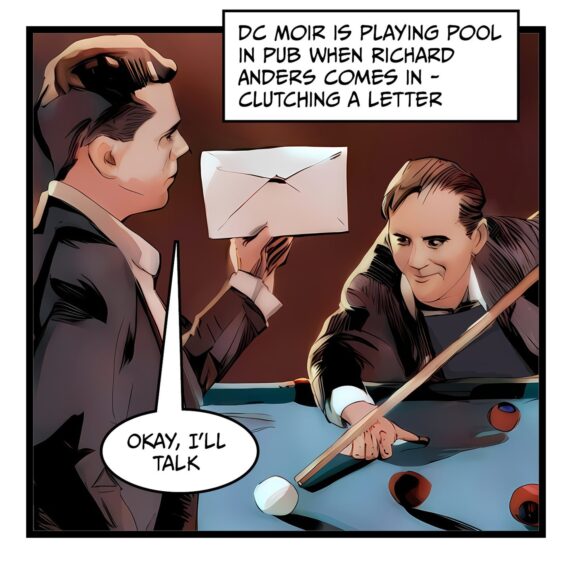
“He appeared at the pub and said ‘can I have a word? Here’s the letter’.”
As the two detectives sat down to read the letter over a pint, they realised it was dynamite.
Not only did Anders directly implicate Roy Allen in the fraud – leaving them with little chance of evading conviction – it also implicated other mysterious parties outside of the relatively pedestrian world of the Aberdeen oil community.
Anders wrote that Roy Allen had allegedly concocted the plan for the fraud with a man named Hajdin Sejdija.
She claimed that, when it all went wrong and she arrived in Abu Dhabi, Mr Sejdija had accused her of double-crossing him.
Aberdeen detectives were mystified
Anders wrote: “Sejdija believed we had not gone through with the transfer or had transferred the money somewhere else using him as a (decoy).
“What precisely were we doing in Abu Dhabi if Roy and I had double-crossed him? That did not appear to be a question that occurred to him.”
Reading this, the detectives were mystified.
Who was Hajdin Sejdija? They would soon find out.
A multi-millionaire wheeler-dealer in his native country, Mr Sejdija became a close ally of those within the Abu Dhabi royal family after he married a princess from the Emirates.
Even today, Mr Sejdija boasts of his business acumen and of rubbing shoulders with Hollywood celebrities such as Cindy Crawford.
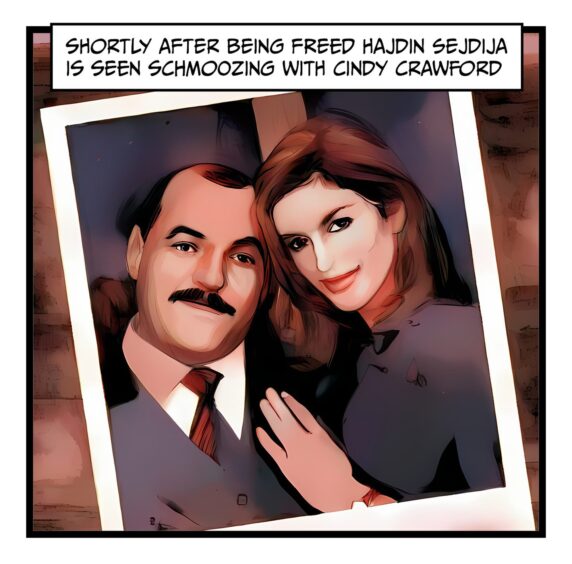
Grampian Police wanted to speak with Mr Sejdija, but there was an ‘international relations’ problem.
Because Mr Sejdija was so well connected with the Abu Dhabi royal family, the local police would not play ball with their Aberdeen counterparts.
‘Someone is winding me up’
DC Moir said: “Sejdija’s name had come up several times. We thought ‘who is this guy?’.
“We had made various requests to the police in Abu Dhabi to carry out inquiries and they just ignored them.
“So one day I’m in the canteen at Queen Street Station in Aberdeen and a phone call arrives.
“The voice says ‘hello, it’s Hajdin Sejdija’. I thought ‘somebody is winding me up’.”
But it was a legitimate call – and the two men arranged to meet at New Scotland Yard in London 24 hours later.
DC Moir said: “I was thinking this guy must have some resources to drop everything, jump on a plane and fly to London.
“The next day, Sejdija turned up, right from Heathrow and we interviewed him.
“His English was perfect. He spoke six languages. He was Albanian and explained that he worked for a sheikh.
“There was a claim he had married a princess within the Abu Dhabi royal family.
“He told us a story about buying this art collection and claimed he had no involvement in the fraud.
‘You’re speaking a load of s***e’
“Sejdija was clearly a guy who was used to clicking his fingers and getting things done.
“He was such an arrogant individual that he thought we would just believe him.”
Expressing his opinion at the time, DC Moir said: “I told Sejdija ‘I don’t believe a word you’re speaking – you’re speaking a lot of s***e’. I got quite vocal with him.
“As a detective, you’re used to sitting in interview rooms with people denying things and you know they are lying through their teeth.
“He went away.”
But one thing the investigators knew was that the £23m Britoil funds were supposed to be channelled through a Swiss bank account.
Again, ‘international relations’ were a barrier, as it was common for Swiss financial institutions to protect clients even when the police came knocking at their door.
A millionaire French antiques dealer
DC Moir said: “But eventually they gave us information about the account where the Britoil millions had been headed.
“It had been opened by a man named Philippe Perrault.”
Mr Perrault, who was 53 at the time, was a millionaire antiques and art collector hailing from the picturesque French town of Chartres, 60 miles outside of Paris.
Grampian Police arranged to visit him.
“Via Interpol, we set up a meeting with him. Myself and Detective Sergeant Peter Willox went out,” said DC Moir.
He added: “Right at the outset, our thought was, ‘who owns this bank account? How was it set up? How did it play a role in facilitating this crime?’
“This was part of that process.
“We flew to Paris and a guy there from the Financial Judiciary met us.
“They were having lunch in their headquarters – a fancy French building.
“You could have steak, you got a jug of wine with your lunch and then you got a brandy with dessert.
“Normally, we had sloppy sausage and mash at Queen Street.
“We were thinking, ‘this French system is the way to go’.
“We went to see an examining magistrate in Chartres – a guy in a Lacoste t-shirt and blazer and he set up the interview with Philippe.
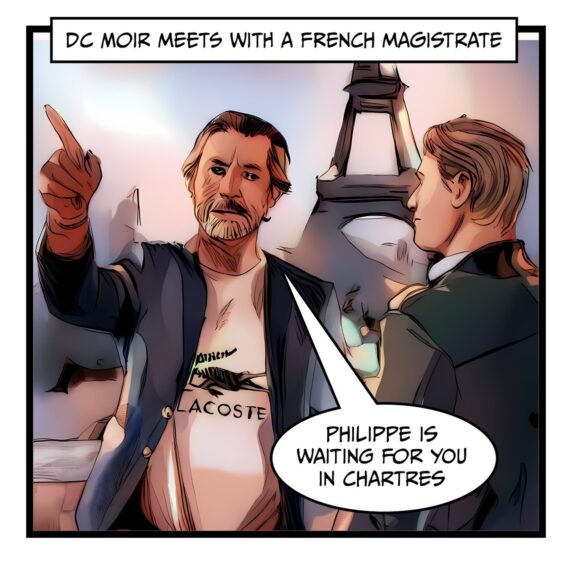
“The next day, he came into see us.”
Again, a familiar name came up.
DC Moir said: “Mr Perrault told us Hajdin Sejdija was a business associate of his in Abu Dhabi.
“Sejdija had been interested in buying his art collection for £12m but to do that he needed a bank account set up.
“The claim was that Sejdija had suggested Mr Perrault should set up this bank account.
‘He said a name – and that was our link’
“During that meeting, Mr Perrault produced a video of his art collection. He knew what he was going to say to us.
“He was clearly quite a wealthy individual.
“All we really needed was him to say who told him to open this account.
“He said ‘Hajdin Sejdija’ – and that was our link.”
And there was more.
Grampian Police got a helping hand from Bucksburn woman Jill Ruddell, who had conducted business in Abu Dhabi.
She knew a man named Omar Hammoud and arranged for police to speak with him in Aberdeen.
Omar Hammoud was the right-hand man of Hajdin Sejdija in Abu Dhabi.
Hammoud was his enforcer who would carry out instructions to the letter.
The team of Aberdeen detectives were able to learn that, after Alison Anders had fled from the Granite City in the days following the fraud, she had a terrifying encounter with Hammoud.
This was in the wake of Hajdin Sejdija getting angry because he believed Anders had double-crossed him and pocketed the £23m Britoil fraud proceeds.
It was alleged Hajdin Sejdija wanted to send a clear message to Anders that he was not to be messed with.
DC Moir said: “Alison claimed Omar Hammoud took her out to the desert and pointed out where she would be buried if it turned out she double-crossed Sejdija.
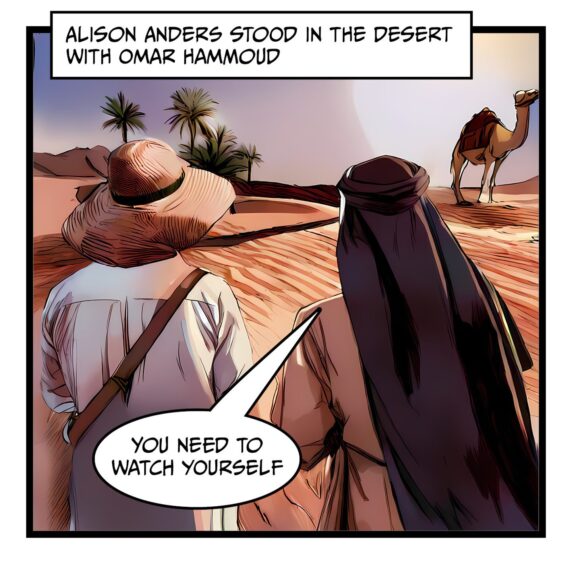
“Hammoud admitted this happened, because he’s been told to by Sejdija (to do it).
“My feeling was, it was 100% true. You know when you’re taking statements from people if they’re being genuine.”
This new evidence completed the jigsaw puzzle for police.
They now knew that, while Alison Anders and Roy Allen had concocted the £23m fraud, there were others involved.
A Red Notice through Interpol
It seemed to them that Albanian moneyman Hajdin Sejdija had helped the Aberdeen pair set up the Swiss bank account where the Britoil funds would be channelled, so he could get a share of the spoils.
Grampian Police knew they could, at least, issue a red notice through Interpol.
This would, in theory, lead to Mr Sejdija being arrested if he stepped foot in Europe.
Their hopes were slim, however, knowing his connections could get Sejdija off the hook.
And that was if Sejdija even dared to set foot on European soil again.
DC Moir said: “We get a warrant granted for Hajdin Sejdija’s arrest.
“He was based in Abu Dhabi, so it was sent via Interpol and it was totally ignored.
“Sejdija worked for the sheikh – he determines what happens. He is in charge.”
But one day, Sejdija did indeed venture into Europe.
The call police wanted
The wheeler-dealer turned up in Switzerland, triggering the Interpol red notice.
DC Moir got the call he had been waiting for on January 25 1990.
“Out of the blue, we got a call from the Swiss Police to say they have arrested him, as he has a house in Lugano in Switzerland,” said DC Moir.
“So DCI Bryan Bryce and I went to meet Sejdija in Zurich and we took him back to Aberdeen.
“They handed him over to us at the airport and we flew to London and then to Aberdeen.”
The tables had turned – and it all led up to a final showdown that gripped the Granite City.
- Hajdin Sejdija is still offering tips on how to become rich through property dealings. He could not be located.
- Jill Ruddell and Omar Hammoud did not wish to be interviewed for this series.
- We made several attempts to contact Alison Anders over a period of several months and she did not return our messages.
COMING TOMORROW IN PART 6: There’s a final showdown as millionaire wheeler-dealer goes on trial in Aberdeen – but will the Crown get a conviction? Plus, where is Alison Anders now?
